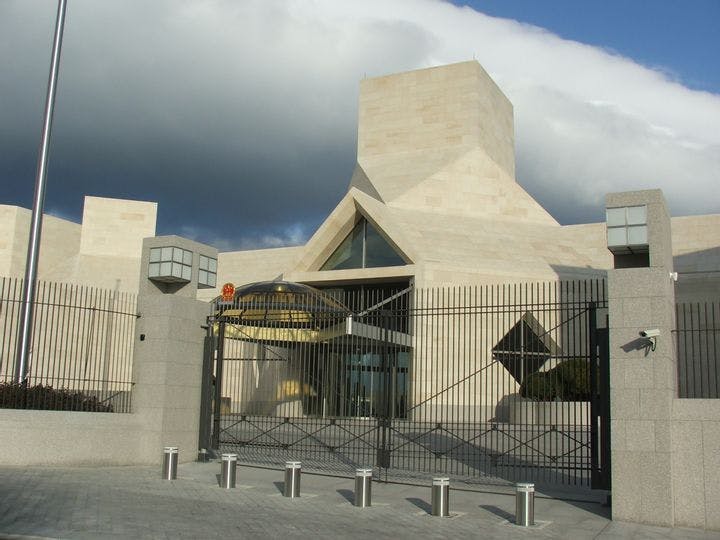Summer 2008
Imperial Edifice
– The Wilson Quarterly
If embassy size relates proportionately to international prestige, what are we to make of two mammoth new entries -- the Chinese embassy in Washington, and the new U. S. embassy in Baghdad?
The Roman motifs of Washington’s earliest public buildings convey the exalted aspirations of the fledgling American nation. And the futuristic architecture of Brasília illustrates Brazil’s goals of half a century ago. Now the new Chinese Embassy rising on a hill in Northwest Washington reflects the architectural aesthetic of a giant new rival on the world stage, writes Kurt M. Campbell, CEO of the Center for a New American Security. At 250,000 square feet, it will be the largest embassy ever built in the United States.
Since the restoration of relations with the United States three decades ago, the Chinese have been holed up in a fortress-like former hotel on one of the capital’s busiest thoroughfares. The old embassy, with its drawn curtains and shuttered windows, seems emblematic of the xenophobia of the Cultural Revolution, and completely out of step with the “mercantilism” of modern China. The vast new steel-and-cement embassy, while discreetly shielded from passing commuter traffic, bids to establish the nation as a more prominent player. As China has opened up to the world, its embassy staff has begun to work the town, talking to reporters, entertaining members of Congress, making friends, influencing people—and keeping trade flowing despite contaminated dog food and lead paint on toys.
The new embassy building, designed by three Chinese Americans, including I. M. Pei, is being built by a consortium of four non-American corporations that cut their construction teeth on Shanghai’s dramatic new skyline. Despite its illustrious architects, its sheer vastness turns it into a bland, “veritable McEmbassy,” Campbell says. Chinese guards patrol the gates of the construction site, and virtually every worker and contractor has come from outside the United States. The Chinese explain the secrecy and security monitoring by saying that when they received an airplane built for senior leaders by Boeing some years ago, they found many “unexpected surprises” in the form of listening devices. “In today’s environment of barely disguised strategic competition,” both sides appear to be constantly probing for inside information on what the other is up to, according to Campbell.
America’s biggest embassy is not its mission in Beijing but the one under construction in Baghdad. When the new Chinese embassy opens, it will be a reminder that while the 20th century belonged to America, China intends to seize the 21st. Its “McEmbassy” is a piece of a larger public-relations strategy, Campbell concludes. Its message is that while the Americans were away “fighting in Iraq and Afghanistan, China arrived.”
* * *
The Source: "McEmbassy" by Kurt M. Campbell, in The American Interest, May-June 2008.
Photo courtesy of Wikimedia Commons
